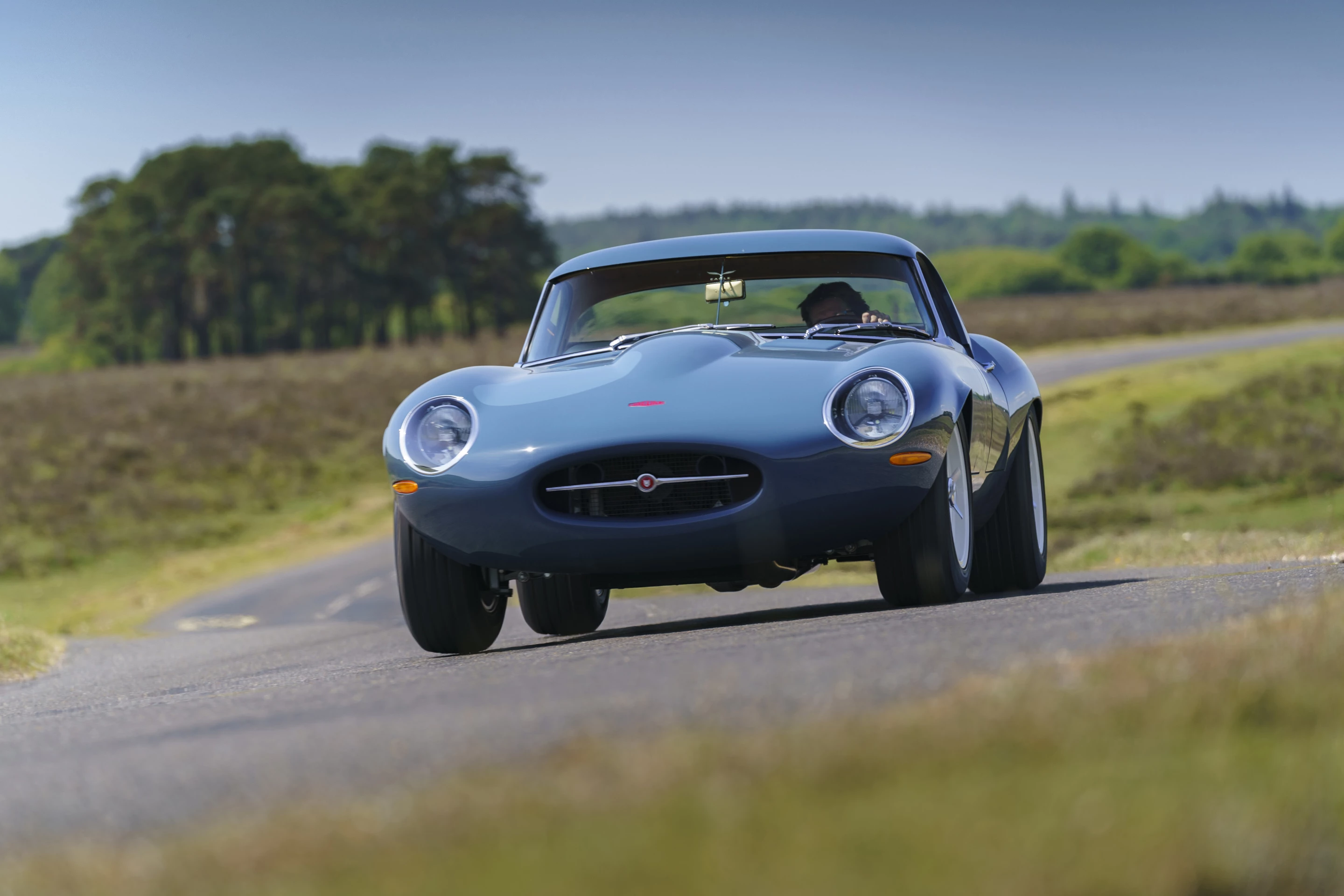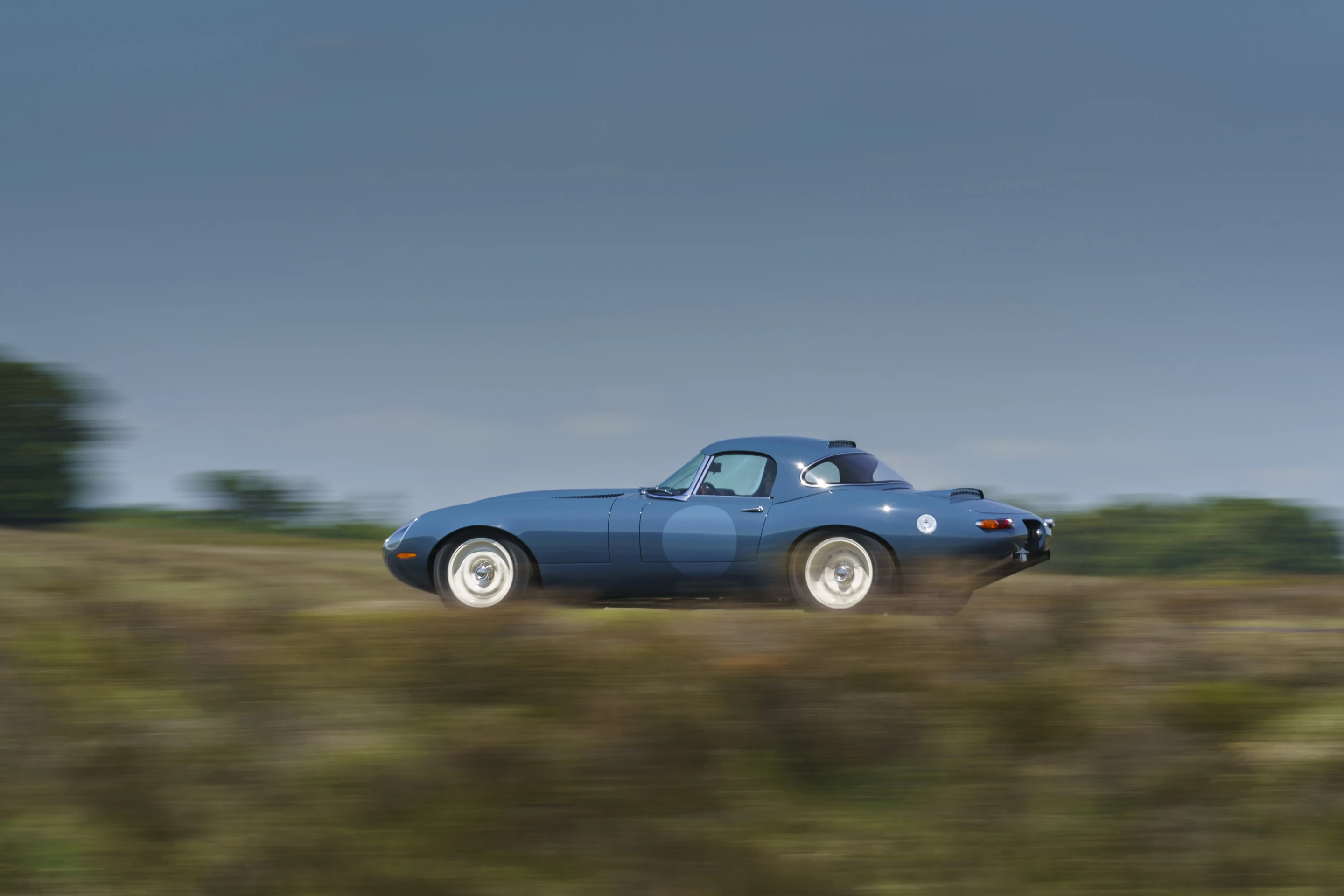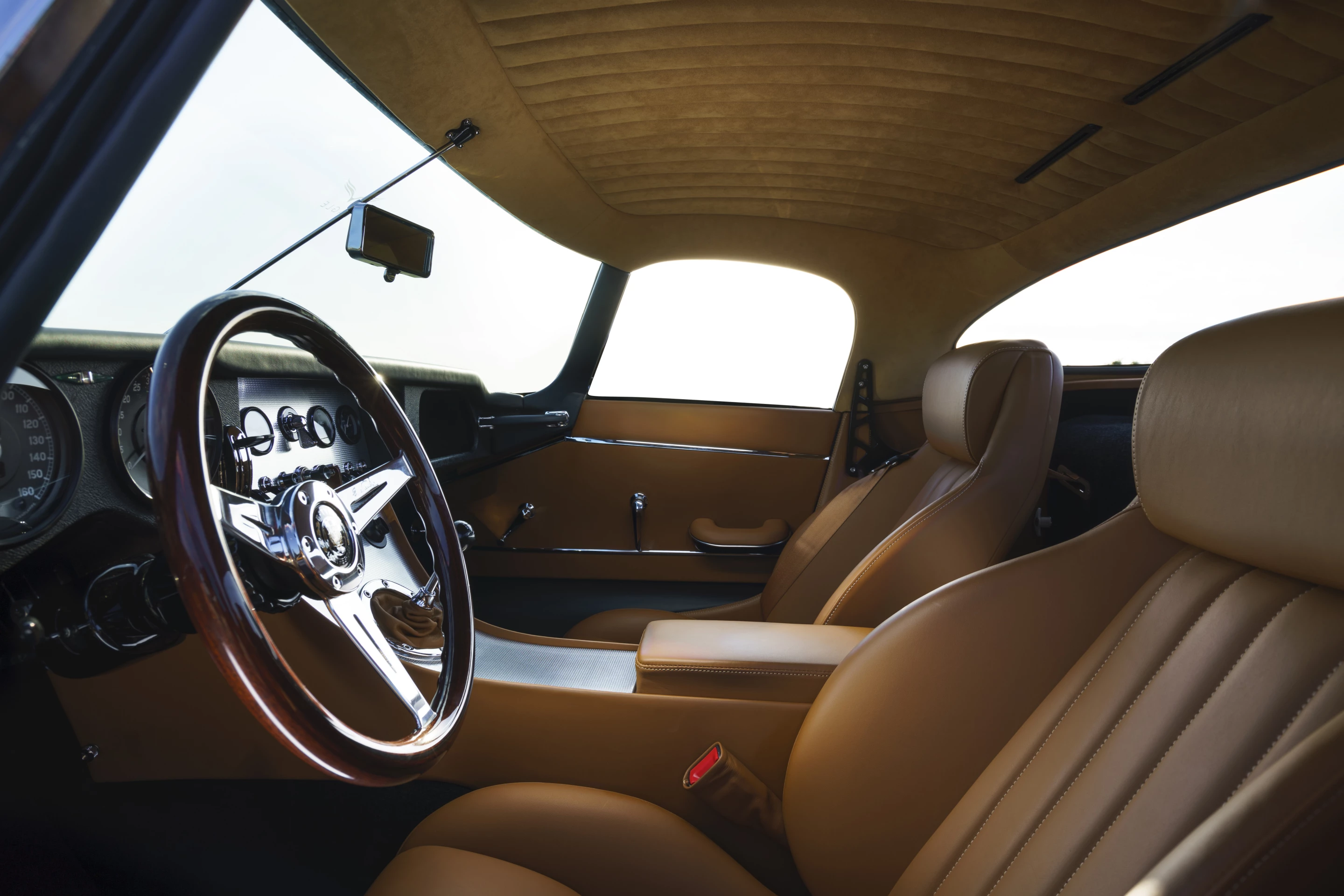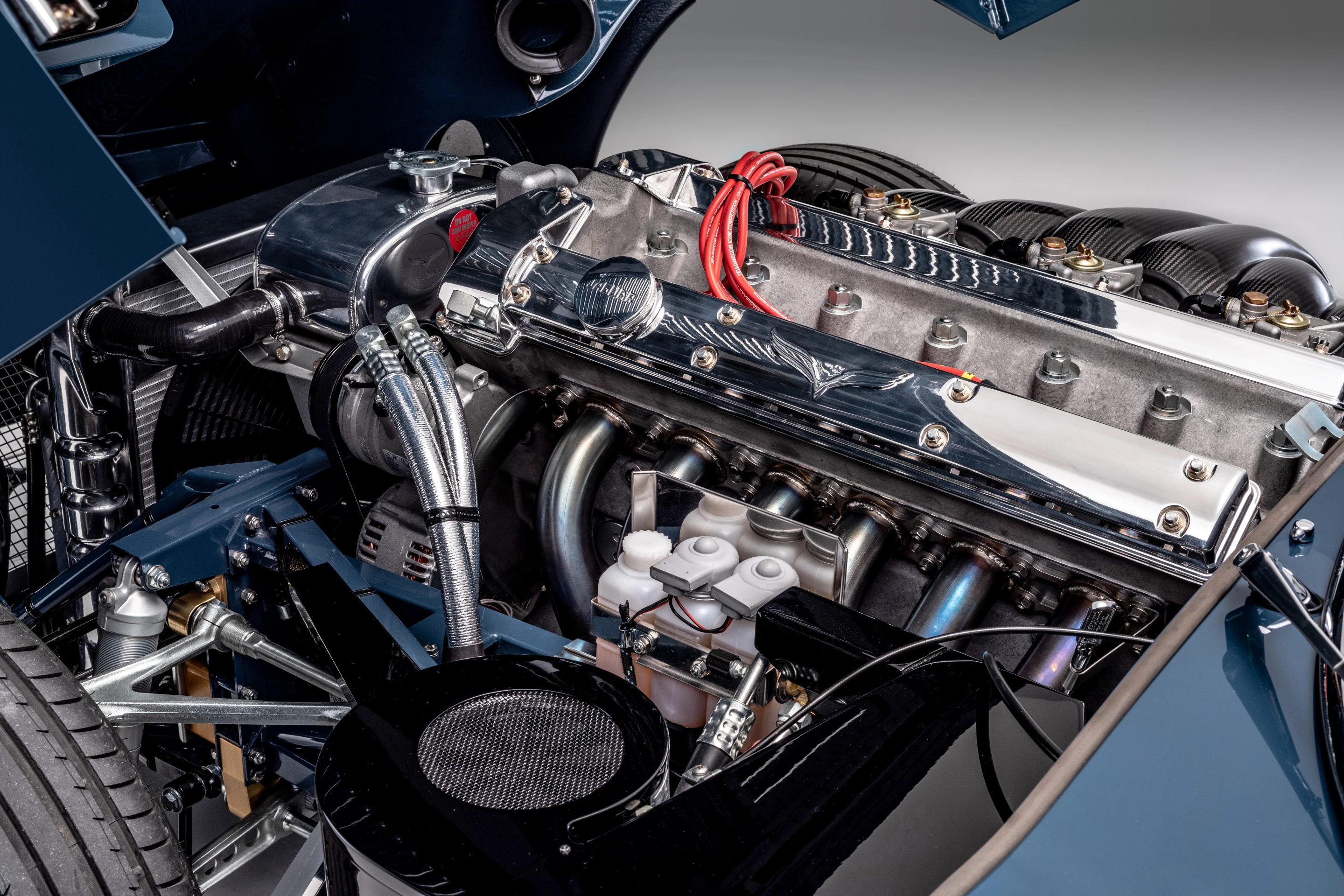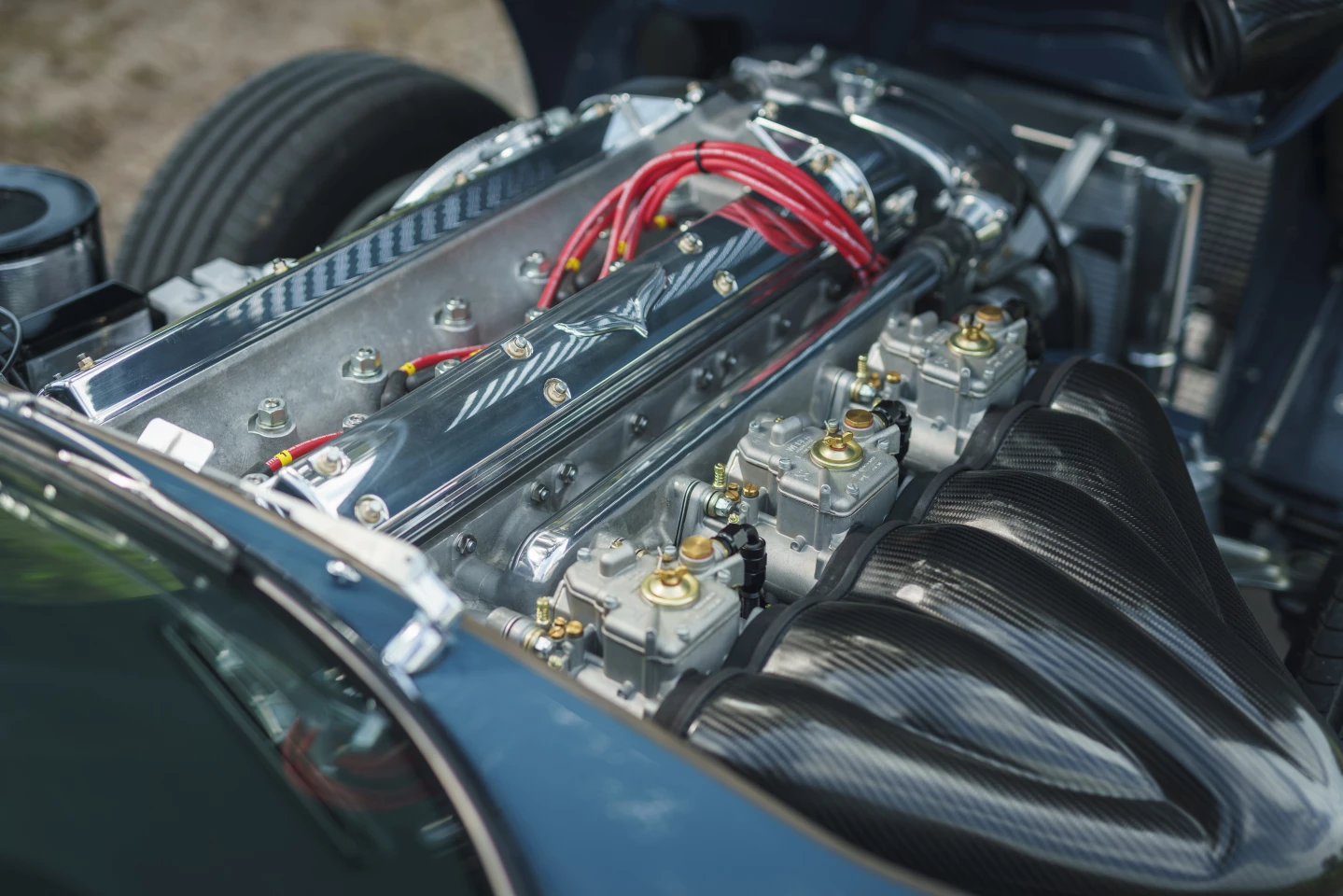The brief was short and sweet, but anything but simple: Build a modern-day reinterpretation of the snarling, rattling 1963 Jaguar E-Type Lightweight, a car built to the tune of exactly 12 prior to Jaguar raising it from the dead half a century later. Oh, and make the notoriously cramped and harsh race car fit for grand touring ... in 2020. Restomod shop Eagle is one of the very few parties capable of entertaining such a request, and it has risen to the occasion in blowing an original E-Type apart and rebuilding it into what it considers "the best an E-Type can be."
"The best an E-Type can be" ... words that can lead in many different directions and rabbit holes. From an aesthetics point of view, the best an E-Type can be is probably "left alone." Just ask Enzo Ferrari. Or the Museum of Modern Art. On the other hand, solid construction-, comfort- and reliability-wise? There's some serious work to be done. And going further to make sure it's a stripped-down E-Type Lightweight that combines true-to-original style, raw performance and modern-day touring comfort? That could take some time.
8,000 hours over three years' worth of time, to be exact — or roughly exact, at least.
"We wanted to retain that special feel of a 60s competition car from an incredible era in British motorsport, but with the comfort, refinement and reliability that would make it an exhilarating daily driver or long-distance GT," says Eagle founder Henry Pearman in describing the challenge.
Pearman and crew got started by stripping a steel-bodied Series 1 E-Type clean, building it back into its timelessly sensual form with aluminum panels shaped on an English Wheel. Instead of merely remaking it in 1963 spec, Eagle explains it relied on modern-grade aluminum and meticulous fitment to exceed by many times the tolerance standards originally set by Jaguar's Competitions Department. The specialized team of craftsmen spent 2,500 hours on this exterior build stage alone, recapturing the original curves and creases while adding subtle performance enhancements like a deeper rear ramp angle and enlarged wheel arches built to house 16-in magnesium-alloy wheels.
Of course, 2,500 hours was but a fraction of the final timesheet. Much of Eagle's blood, sweat and tears dripped below the sumptuous aluminum skin, where work started with swapping the iron block of the six-cylinder engine for an aluminum block, just the way Jaguar did on the original Lightweights so many years ago. It also added in a wide-angle head to improve breathing and bespoke crankshaft, pistons and connecting rods for better responsiveness and durability. As with Eagle's other builds, displacement was bumped to 4.7 liters.
The overhauled powerplant puts out 380 bhp at 5,750 rpm and 375 lb-ft of torque at 4,000 rpm. Eagle describes a flat torque curve creating effortless speed before the straight-six howls its way toward redline. The engine pairs with a fully reengineered syncromesh five-speed gearbox encased in magnesium. Eagle pegs peak performance at 170 mph+ (274 km/h+) and under five seconds between 0 and 60 mph (96.5 km/h).
Job well done, right? Perhaps, if Eagle's goal was to create an all-out track performer like the original, but it still had a separate pile of work ahead of it. To give the car the comfort and drivability of a proper Lightweight GT, it dialled in the suspension with custom Ohlins adjustable dampers and tweaked geometry, bushings and spring rates. It then brought in modern four-piston servo-assisted vented disc brakes.
Inside the doors, Eagle increased legroom by tweaking the floorpan, pedal mountings and rear bulkhead. It also overhauled the seats for better long-term comfort and safety, going so far as to 3D-print more ergonomic adjustment levers. A carefully integrated A/C developed in-house and modern thermal insulation leave the fiery hot race car cabin behind in the 20th century.
The final result, as you can see, is absolutely gorgeous: a modern E-Type Lightweight that stops the scale needle dead at 2,242 lb (1,017 kg), even with the air conditioner and additional mod-cons.
After completing Lightweight GT number 1, Eagle is now offering Lightweight GTs to other buyers. It doesn't hint at how much of their liquid assets buyers will need to sign away, but looking at the near-US$900,000 price of the last new Eagle E-Type special edition we covered tells us it will be quite a bit. And since Eagle only plans to build exactly two special edition models — of all four variations it offers, not just the Lightweight GT — per year, it stands to reason that if you really have to ask ... well, you should probably be doing so in Pearman's office, ready to lay down a deposit.
Source: Eagle






